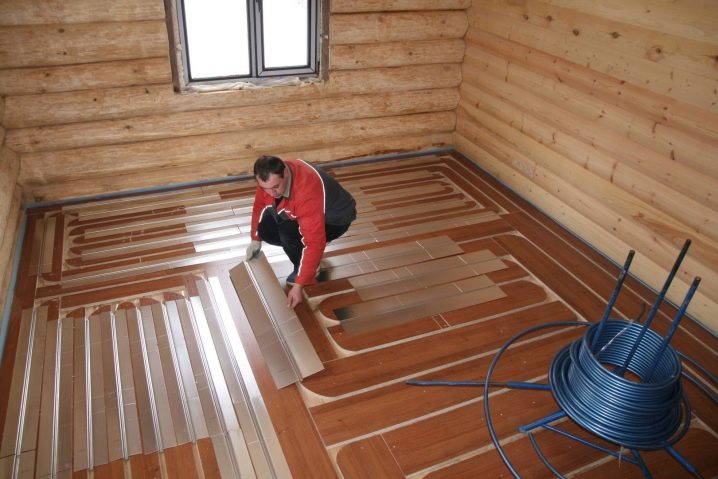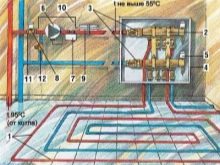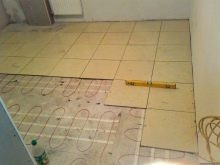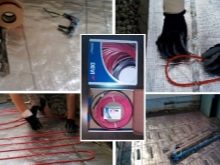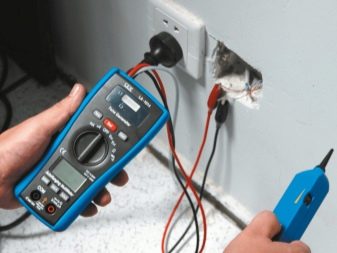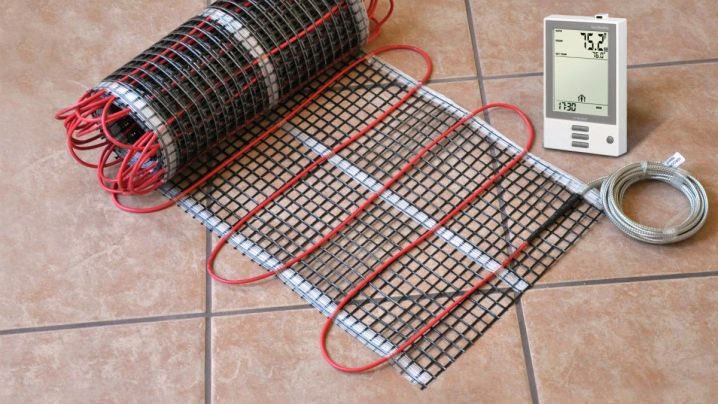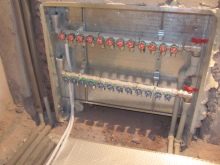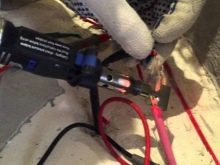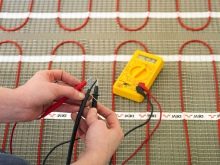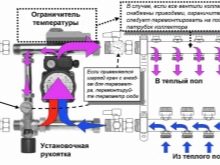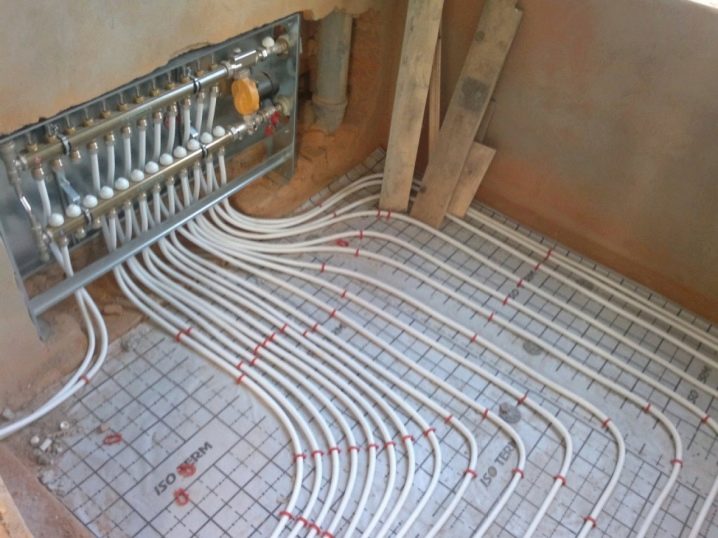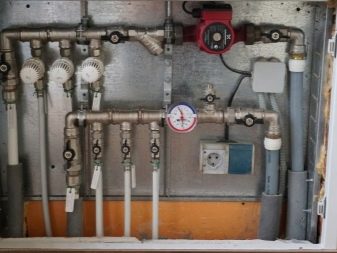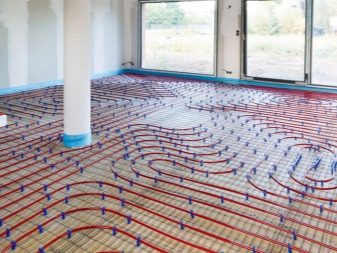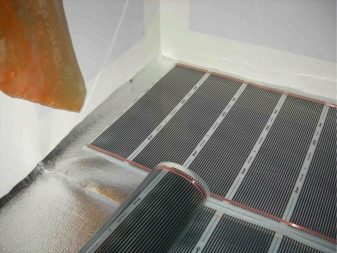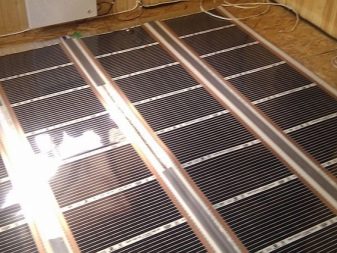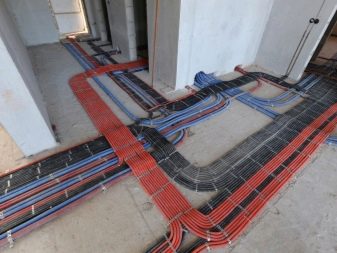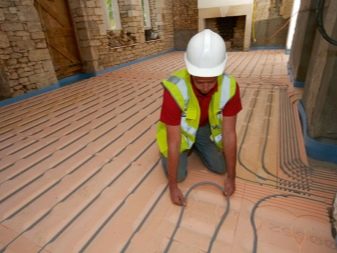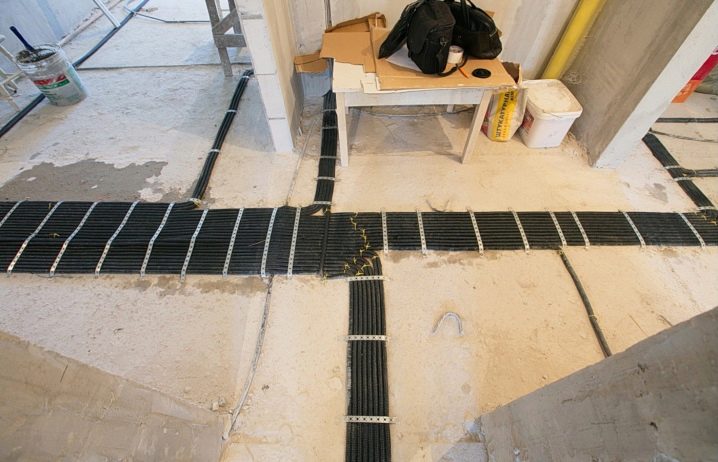Repair the warm floor do it yourself
The system called the warm floor is a very popular way of heating the room, and also enjoys a growing demand. Ease of use lies in the uniform distribution of heat fluxes from the floor to the ceiling with the most comfortable layout of temperature values: the temperature at the surface of the floor corresponds to 20-24 degrees, and at the level of human height - the best 16-18 degrees. The surface of the floor covering serves as a heating panel, and the heating structure with wires and pipes is hidden under it.
Value
The system fully replaces the main heating, does not litter the interior with radiators and retains the natural humidity of the air in the apartment. Manufacturers give a 20-year guarantee for the uninterrupted operation of the system, but for some reason it sometimes fails.Some can be eliminated by yourself.
Fault Diagnosis
To determine the cause and location of a breakdown, you must first measure the supply voltage.
- Results should be compared with the parameters specified in the accompanying documentation. In case of a deviation from the norm by more than 5% or the absence of the indicator light signal, it is necessary to measure on the terminals. If there is no voltage, the cause of the breakdown is a temperature sensor or a thermostat. The contacts of the thermostat can also be weakened;
- Then you should check the external thermal sensor by disconnecting it from the thermostat and measuring the resistance. The measurement result should be in the range of 5 to 30 kΩ. When checking the thermostat, the electrical cable must be disconnected from it.
- If as a result of testing the measurement results are within the normal range, then should begin the examination of the heating element. It is carried out by measuring the resistance of cables and insulation. If the figures are much lower than in the data sheet, then there may have been a break in the electrical cable,determine the location of which will be possible only with the help of special diagnostic devices - high-voltage generator and audio detector, working as a metal detector;
- The place of the cliff can be found with the help of thermoplates. If a conductive bridge appears between the cable cores and, as a result, a low voltage, the damaged portion of the electrical cable begins to heat up. Applying thermoplates will determine the place of the gap.
Causes of faults
The principle of operation of an electric floor is to heat an electric cable or thermomat installed in a cement or glue screed. The system is equipped with a thermal sensor and thermostat.
After turning on the heating, the temperature of the sensor is compared with the set temperature of the thermostat, and the indicator light goes out, and the heating element is automatically turned off.
Damage to one of the structural elements leads to a general failure of the system, or to its incorrect operation. Before proceeding with the repair of structures, it is necessary to find out the possible cause of failure.
The most common are the following faults.
Damage to the electric heating element.
Occurs when improper installation or as a result of repairs. Often a single-core cable is drilled, for example, when installing a door frame.
Having determined the place of cable damage, one should proceed to dismantling a section of a concrete or glue screed. After opening the floor and finding the place of breakage, it is necessary to clean the burned-out conductors and connect them with the help of sleeves of the required diameter, having pressed it with press tongs.
The junction is fixed with a shrink sleeve, preheated using a household hair dryer. As it cools, the coupling will tightly cover the joint and ensure complete tightness. At the end of the work, the place of breakage is filled with cement mortar.
Damage to the temperature sensor.
With such a breakdown, the system loses its ability to self-deactivate when it reaches the set temperature. Electricity consumption is significantly increased, and non-stop operation of the electric heating cable can quickly disable it.
In this case, a complete replacement of the sensor, which is located in the corrugated pipe, is necessary.This element location eliminates the need to open the floor and walls and allows you to quickly change the faulty unit.
If during the installation of a heated floor the technology was violated and the installation of the thermal sensor was carried out at the base of the screed, then an additional sensor should be placed and placed under the thermostat.
Thermostat malfunction
A malfunction of the thermostat can lead to loss of climate control and overheating of the thermal cable, or thermomat. It is a common type of breakdown. Eliminated by replacing it with a new one.
Diagnostics of malfunctions of the thermostat should begin with checking the connection of the cable, temperature sensor and power terminals. Then you need to measure the voltage, which at the terminals of the cable should be equal to the total supply voltage (in the off state of the thermostat).
If the data obtained do not correspond to the parameters specified in the technical data sheet, it is necessary to replace the unit.
Causes of water floor faults
The reason for the breakage of water floors can be careless actions during repairs or installation defects.
In case of mechanical damage to the pipeline with a perforator, it is necessary to turn off the water without removing the tool from the pipe. Then you should clear the place where the pipe struck and get free access to the damaged plumbing. Rubber gloves should be worn at the ends of the affected pipeline to help prevent small debris and dirt from entering the system.
Next you need to mount the fittings, and also insert a new pipe into them, cutting off the excess length from it. Then you should pressurize the connections and make a test run of water. After checking the system for tightness, you can begin to pour a new screed on the exposed area.
How to repair infrared floor?
Infrared floors are the most convenient to install and use. They do not need a concrete or glue screed, can easily change their location, are compatible with all types of flooring and have a thickness of 1 mm. The canvas is a polymer film with conductors made of carbon fiber using silver and crosslinked from polyethylene. Heat transfer is possible due to infrared radiation.Diagnostics is carried out by analogy with the testing of an electric floor. It should be done using the same methods and tools.
Error prevention installation
Breakage and malfunction of the heated floor may occur due to improper installation and violation of the technology of installation work. Knowing and adhering to certain rules will help avoid premature repairs and extend the life of the system.
When laying a warm floor, you should make a diagram of the location of large-sized furniture and large interior items. Laying heating elements under them is prohibited.
The cable can systematically overheat and quickly fail. Purchase of thermal cable should be made in accordance with the required footage. Circumcision surplus is unacceptable.
It is forbidden to lay the heating elements on the dirty and littered surface, as well as walk along the cable during the laying.
Thermal sensor can not be immured in the screed - it must be placed in an accessible place and be in a corrugated pipe. This allows you to quickly replace it if necessary.
When pouring a heating element with a coupler, it is necessary to ensure that there are no cracks or voids around it. This can lead to overheating of the cable and its quick breakdown. At the end of the installation you need to check the resistance.
Strict compliance with the rules of installation and competent diagnosis of units can significantly increase the service life of a unique heating system. And self-repair will allow to carry out work in a short time and significantly save the budget.
On how to do the repair of a warm floor, see the following video.


